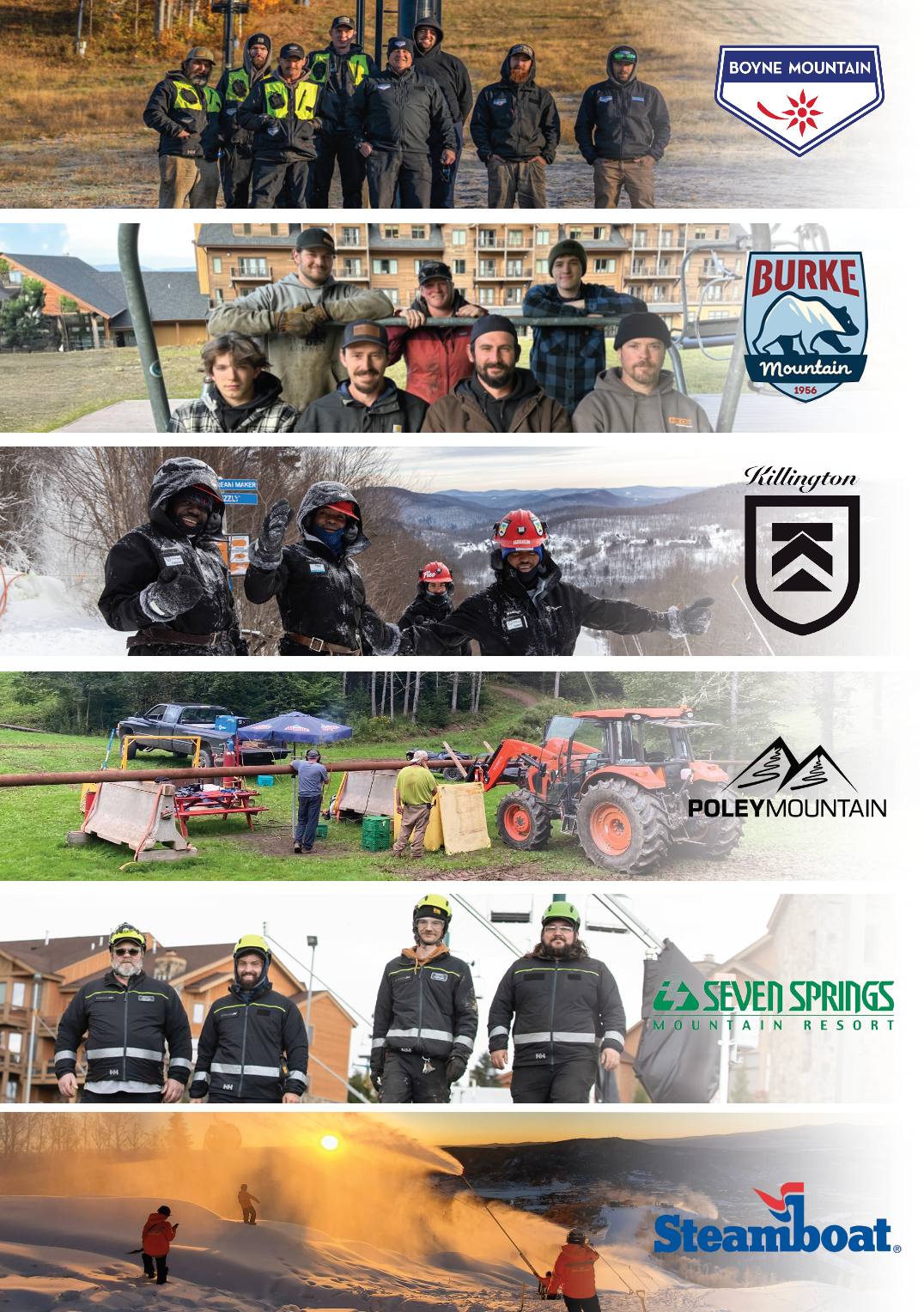NEWS
Six Snowmaking Teams Selected for 2026 “I AM a Snowmaker”
Published in Ski Area Management Magazine, November 2025
SAM Magazine—Natick, Mass., November 4, 2025—Teams from Boyne Mountain, Mich.; Burke Mountain, Vt.; Killington Resort, Vt.; Poley Mountain, New Brunswick; Seven Springs, Pa.; and Steamboat, Colo., have been selected as finalists in the 11th annual “I AM a Snowmaker” contest, sponsored by HKD Snowmakers.
Resorts across North America nominated their snowmaking teams this fall to participate in the 2026 competition. The six chosen resorts will now produce videos highlighting their snowmaking crews—with a fun twist. Each team will receive a deck of cards from HKD featuring timeless words of wisdom from co-founder Herman K. Dupré—sayings like “Do you know what happens when you do nothing?” and “Every time you flush the toilet, you should fill the snowmaking pond.” Each team has been tasked with creatively weaving those Dupré-isms into their videos.
Since its debut in winter 2013-14, the I AM a Snowmaker contest has shined a spotlight on the critical role snowmaking teams play in the success of the mountain resort industry. This year’s videos will debut in mid-January on SAM’s digital channels, where the public will vote for their favorite. The winning team will earn an HKD Viper table and the title of 2026 I AM a Snowmaker Champion.
SAM will share the videos and voting details in January, with the winner announced in February. Follow the contest at saminfo.com.
As Herman K. Dupré liked to remind his team, “Never leave a good time to find a good time.” The fun, and the friendly competition, are just getting started.

How two small areas grew their bottom lines, engaged staff and customers, and future-proofed their businesses.
Written by: Claire Humber, Principal, SE Group
Published in Ski Area Management Magazine, September 2025
How can small areas, or even large ones, find the working capital they need to succeed? By adopting a strategic business plan that focuses on key revenue and expense numbers. This gives ownership and management teams the ability to tighten up operating metrics for maximum efficiency and return on investment.
For example, a strategic business plan can help gauge the value of maintenance vs. capital spending. At Canada’s Poley Mountain, GM Jamie Hare points out that the ski area spent $150,000 in maintenance on snowmaking over a two-year period just to retain its existing capacity. “You’re dumping money down the well and you’re staying the same,” says Hare. “Where are you moving the needle?” Their strategic plan clarified a shift in strategy to investing in new equipment.
Developing such a plan starts with tracking key operating metrics to establish a baseline, and then looking at the potential financial effects of possible improvements. The resulting plan can be used to evaluate an existing operation, help pinpoint opportunities for growth, and serve as a guide for the phasing of any improvements and a tool to help monitor their progress.
Sound strategic business plans follow fundamental principles, such as being data informed, incremental and implementable, and grounded in business needs. Credit: SE Group.
In Practice
The following two case studies illustrate key fundamentals and how they can lead to success. The subjects are Boler Mountain, an urban/suburban area in London, Ontario, and Poley, a more rural ski hill near Sussex, New Brunswick. Both mountains would be in the National Ski Areas Association (NSAA) “small” areas category. Both have seen incremental growth in visitation, revenue, and operational performance as a result of following the key strategic business plan fundamentals. And both use their plans as a guide to decisions about future investments.
Poley Mountain
Located in the (Bay of) Fundy region in southern New Brunswick, Poley is a model community ski hill: 32 trails, 660 feet of vertical, and a steadfast group of local owners.
In 1999, the area was on the verge of closing when a group of 40 local shareholders stepped in to preserve it. They established a simple but powerful model: operate like a virtual not-for-profit, reinvest every dollar earned, and never stop evolving. Reinvestment has focused on building a solid foundation for the future, including snowmaking system upgrades, a new conveyor-served beginner area, and a reconstructed base lodge after the original was destroyed in a fire.
Opportunity in summer. The owners have also initiated summer operations to harness the opportunity afforded by its proximity to the Bay of Fundy and within the UNESCO Fundy Biosphere Region, establishing lift-served mountain biking, a small RV park, and promoting the new lodge as a wedding and events venue.
“The plan was built with care, which has allowed us to act with confidence,” says Hare.
Over the past 25 years, Poley has seen 400 percent growth in overall revenue. From 2021 to 2025, revenue grew 35 percent. And last season, operating profit margin exceeded the business plan by almost 10 percent.
Poley’s next chapter foresees significant investments in lifts and snowmaking—the “heart and lungs” of the operation, says president and board chair Michael MacNeil. The ski area’s strategic plan will guide how that unfolds.
“You can grow a business based on summer operations and be sustainable. However, your core business of skiing also needs to be reinvested in and supported,” adds Hare.
Left to right: A 2022 survey of season pass holders has helped guide investment decisions at Poley Mountain, such as a deeper commitment to mountain biking; A plan to reinvest profit into the operation set up Poley to be able reconstruct its base lodge after the structure was destroyed in a fire.
Strategic Planning: The Fundamentals
There are several fundamental elements of a good strategic business plan: data analysis, incremental development, budgeting for annual maintenance, and knowing your audience.
Fundamental #1: Collect and Use Your Data
Both the Boler and Poley leadership teams are strong advocates of collecting and using data to drive decision-making. Whether improving efficiency, managing risk, or capitalizing on growth opportunities, having the right numbers—and the ability to measure what matters—is crucial to making informed decisions.
Accessible and useful. Poley has spent four years cleaning up its financial reporting to facilitate faster, data-backed decision-making. As part of this, it recently installed RFID gates to accurately track skier visits (and reduce instances of unpaid access). Hare says he appreciates the ability to measure the things that matter and to know where strengths and weaknesses lie. He uses this data to capitalize on opportunities.
“Department-level accountability has become the new norm,” he adds.
Poley’s financial reporting is organized to correspond to industry-available data, such as the annual NSAA Economic Analysis of United States Ski Areas, so that the team can more easily use it for annual benchmarking. While U.S. data isn’t a perfect comparison for Canadian ski areas, the EA is the most granular report of its kind, making it very useful for ski areas in both countries.
Sometimes, plans evolve. Similarly, MacNeil and the Poley team believe that long-term success lies in a near-term focus on the fundamentals, to maximize the efficiency and returns of the current operation and provide a solid foundation for future growth.
Poley began its strategic business planning in the early 2000s with an assessment of its winter operation and then evolved into long-term planning for year-round business. Industry benchmarking provided insight and clarity: it highlighted issues related to pricing, operational efficiency, snowmaking capacity, and long-term infrastructure planning.
For Poley, the longer-term investment on the horizon is replacing its quad lift, the workhorse of the operation. This replacement project is a five-year goal. The leadership team is currently exploring funding for it. Regardless, MacNeil noted, “you have to have a plan, even if the future is uncertain.”
Fundamental #3: Budget for Annual Maintenance
The importance of continued, disciplined reinvestment in the operation is foundational to long-term viability. As Hare notes, “The stakes are real. When snowmaking is delayed or lifts go offline, resorts lose not just days on snow—they lose momentum.”
Many resorts share the challenge of aging infrastructure. And when a lift is nearing the end of its lifecycle like Poley’s quad, or snowmaking systems become unreliable, the cost of inaction may be unplanned downtime, lost revenue, or erosion of guest trust, notes Hare.
Follow the data. Planning for major investments in snowmaking and lift infrastructure were central to Poley’s strategic planning process. The cost-benefit between the continued maintenance of old systems and investing in new—including the factors of reliability, energy efficiency, environmental impact, and guest experience—were quantified. The data helped solidify the need for replacement.
Fundamental #4: Know Your Audience
Poley: pay attention to guests. Poley’s most defining strength might be its willingness to listen. In the spring of 2022, the resort surveyed its season pass holders. More than 30 percent responded. They asked for a better terrain park, more efficient dining experiences, healthier menu options, stronger social media engagement, and a deeper commitment to summer operations like mountain biking.
“Our job isn’t just to make decisions; it’s to listen and adapt,” says Hare. “The best ideas often come from the people using our hill every day. And the real magic happens when your team feels empowered to act on what they hear.” That spirit of responsiveness has become a core part of Poley’s identity.
After reinvesting in winter infrastructure, Poley pursued incremental summer growth with offerings like a small RV park.
Fundamental #5: Invest in an Engaged Management Team
Both mountains attribute much of their success to the commitment of their management teams. “Poley’s investment in a year-round, engaged team has been a success story,” says Hare. “Having six or seven full-time employees through the summer is a key shift from the past and sets the stage for better strategic execution. Our new CFO has overhauled our financial systems, and we’ve doubled down on HR so we can up our game on people management.”
Plan to Thrive
Hare’s message to fellow operators of small ski areas is heartfelt. “As a small area, our plan is our power,” he says. “Poley Mountain has proven that small resorts can thrive with clarity, commitment, and courage. If you’re leading a mountain today—big or small—ask yourself: Do we have a plan? Are we listening to our guests? Are we measuring what matters?”
Finally, he says, “Consult your team and partners. Engage your leadership. Prepare your future.”


